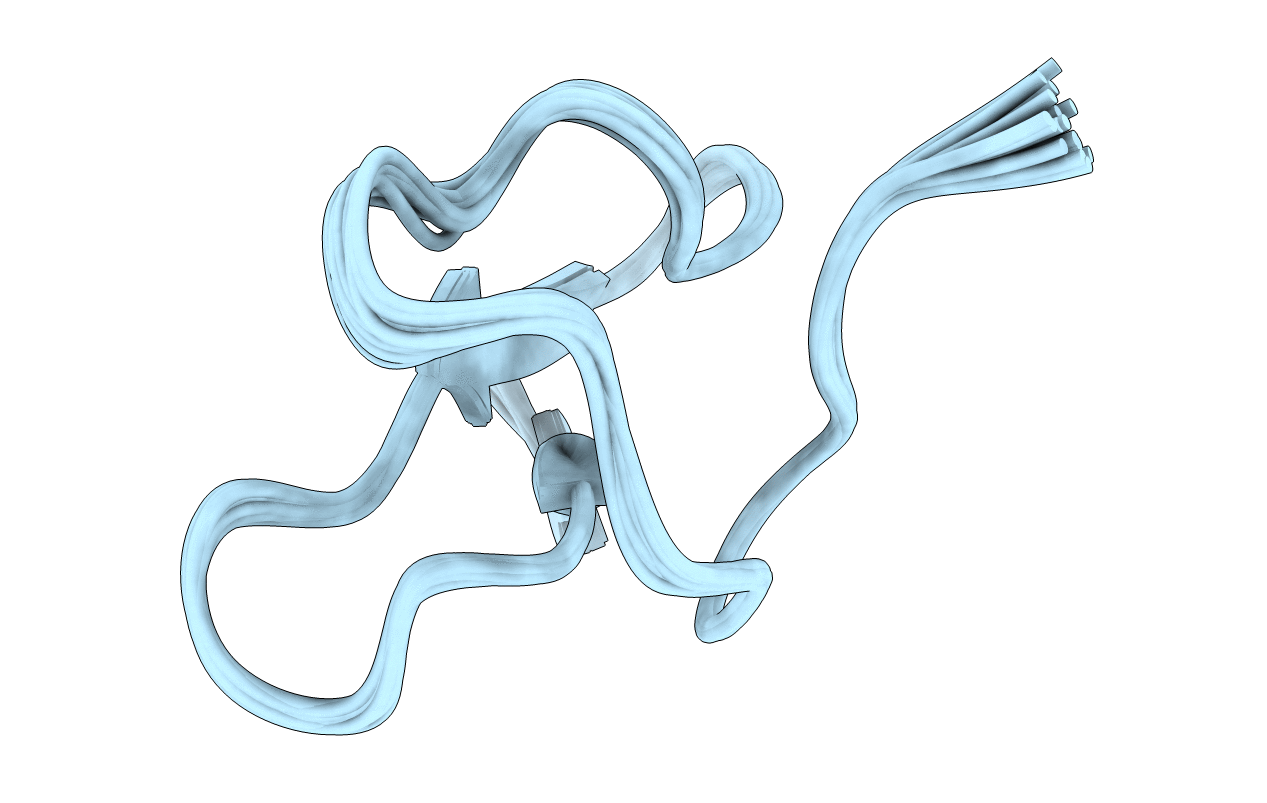
Deposition Date
2018-05-02
Release Date
2019-03-06
Last Version Date
2024-10-09
Entry Detail
PDB ID:
6GFT
Keywords:
Title:
Antinociceptive evaluation of cyriotoxin-1a, the first toxin purified from Cyriopagopus schioedtei spider venom
Biological Source:
Source Organism:
Cyriopagopus schioedtei (Taxon ID: 1046902)
Method Details:
Experimental Method:
Conformers Calculated:
20
Conformers Submitted:
20
Selection Criteria:
all calculated structures submitted


